It is one of the greatest and saddest ironies of our time that we live in a time where food has never been more abundant, and yet the people who work to bring that food to the general population suffer wild abuses and severe underpayment at the hands of their employers.
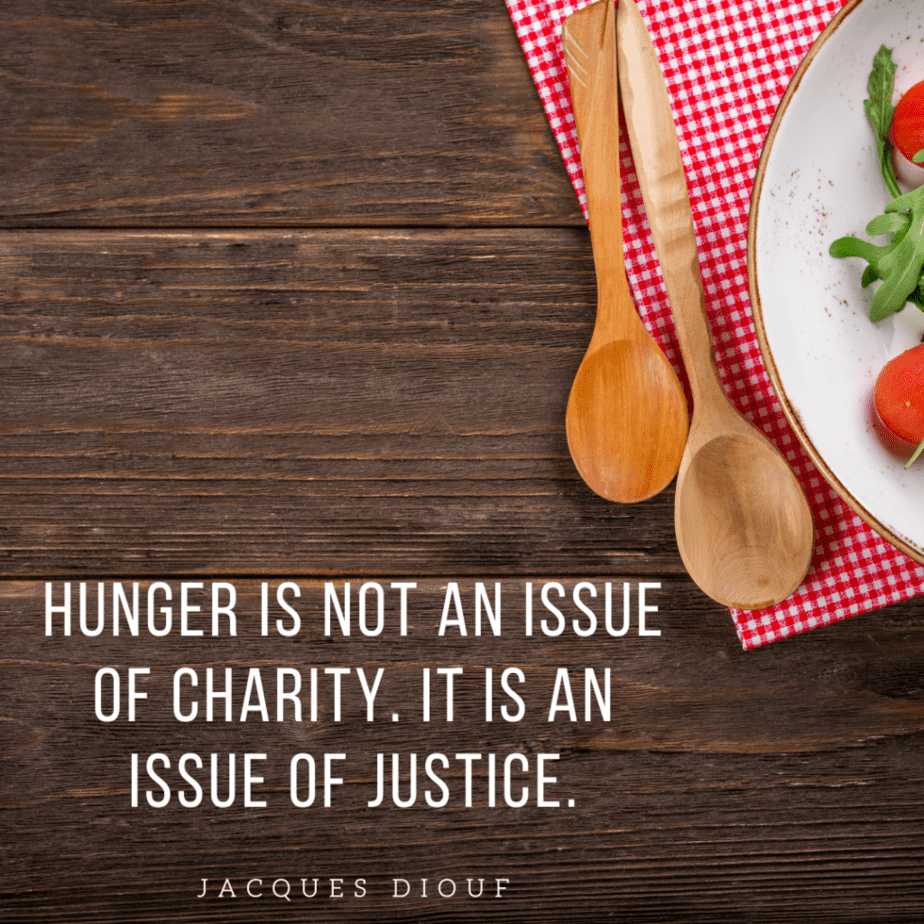
Systemic inequality isn't the exception in the food chain, it's unfortunately been the rule. Greedy private sector actors wield an unconscionable amount of economic influence over the American political system, thus maintaining the despicable status quo.
If you are a food system worker who has suffered abuses like wage theft, inhumane or dangerous working conditions, forced labor, or sexual harassment, you are sadly not alone. Please scroll to the "Organizations" section below to find a list of organizations that are working toward meaningful change; they may be able to help you.
Jump to:
- The American Food System
- Widespread Poverty In The Food Sector
- Food Workers Disproportionately Require Government Aid
- Wage Gaps Worse For Women & BIPOC
- Other Labor Abuses Are Common, Too
- The Business of Corporate Greed
- Consumers Are Getting Fleeced, Too
- Organizations Working Toward Justice For Food Workers
- More Reading & Listening
- Other Resources:
- 💬 Reviews
The American Food System
When you think of the typical American supermarket, I'd bet the first image that pops into your mind is one of abundance. The average supermarket has a footprint of 48,000 square feet, carrying between 15,000-60,000 SKUs (read: unique items available for sale) to stock all the shelves and bins. Over 30,000 new food products hit the market every single year.
The shelves are overflowing with dozens (or more) varieties of anything you could ever dream of having in your kitchen, from peanut butter to hot sauce to frozen entrées. The produce section is filled with the bright colors of berries and fresh tomatoes, even in the depths of winter.
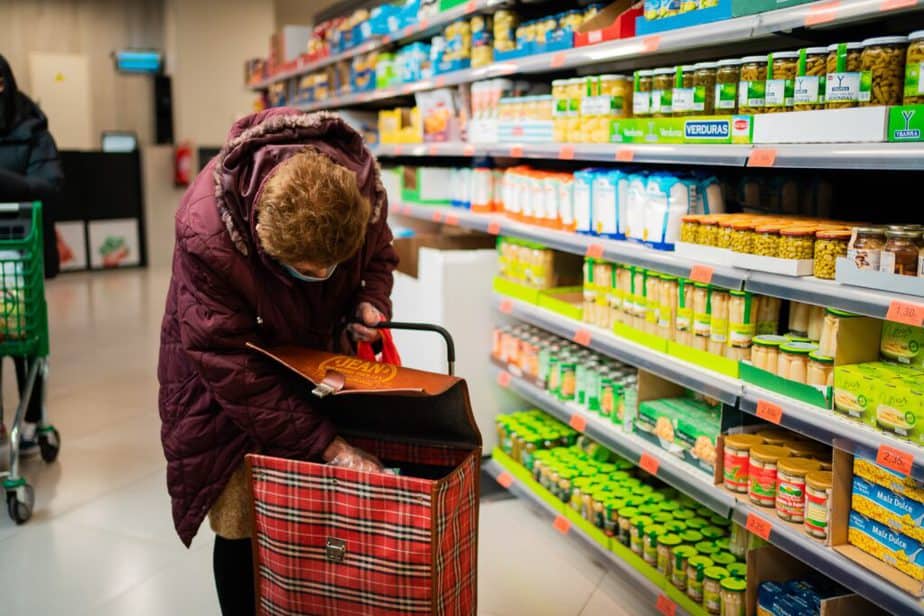
So it should come as no surprise that nearly ⅛th of the American people — that's about 21.7 million workers — have jobs somewhere in the food sector. How else would we be able to support such a massive industry?
What might come as a surprise – and hopefully also an outrage – is the fact that food service workers are far more likely to be woefully underpaid, lack health insurance, sick leave, or other benefits, and experience exploitative (and often dangerous) working conditions.
Widespread Poverty In The Food Sector
8 out of 10 of the worst-paying jobs in the US are held by the very people who make our grocery store cornucopia possible. Despite working to create or distribute American food, these food service workers are often unable to afford the bounty of their labors for their own families.
In fact, food sector workers are 50% more likely to have to use food stamp benefits than other American workers. The very people who grow, harvest, make, sell, and serve food to others on a daily basis are going hungry. No matter how you slice it, that's just wrong.
In 1948, the Universal Declaration of Human Rights established the right to food as an inalienable right. Food system workers are essential to make this right a reality but have ironically been excluded through labor abuses like wage theft, forced work, and minimum-wage pay with no opportunity for full-time work or advancement.
Food Workers Disproportionately Require Government Aid
Foodservice workers are more likely to be on government aid like Medicare and SNAP, and 70% of those receiving benefits are working full-time (35+ hours per week). Companies like McDonald's and Walmart consistently hit the top-10 list of employers that had the highest number of employees who rely on these government assistance programs.
As if that weren't enough to ruffle your feathers, over $64 billion in SNAP benefits went to the top 4 grocery chains in 2020. And since big-box retailers often push soda sales on the days that SNAP benefits are disbursed, we can assume quite a bit is also going towards PepsiCo & CocaCola. The American taxpayers are subsidizing the profits of these corporations while their workers go hungry.
Bernie Sanders said it best: “At a time when huge corporations like Walmart and McDonald’s are making billions in profits and giving their CEOs tens of millions of dollars a year, they’re relying on corporate welfare from the federal government by paying their workers starvation wages.”
These large companies have also been inexplicably protected from sharing their SNAP-funded sales data since 2013. So, despite SNAP being one of the largest taxpayer-funded social programs in the US, and despite less than 1/10th of 1% of retailers who accept SNAP opposing the release of said sales data, we as taxpayers have no way of knowing exactly where those funds are flowing.

Wage Gaps Worse For Women & BIPOC
Food workers made 46.8% less than the average American in 2020. Oh, and in case it wasn't clear? The majority of these underpaid and exploited workers fall into minority groups including BIPOC, immigrants, and women.
To paint a bleak picture, just look at the wage disparity in the food sector as of 2016: for every dollar earned by white men, white women earned just 47 cents, while Black women and native women earned just 42 cents and 36 cents, respectively.
It's also pretty telling that average CEO compensation grew from 386 times the median worker's wages in 2019 to a whopping 400. In case you need to look at it a different way, that means CEOs for food companies earned 400,000% of what their average front-line workers made in the midst of a global pandemic.
Other Labor Abuses Are Common, Too
If you think the terrible working conditions outlined in Upton Sinclair's The Jungle (published in 1905) are stories of a past life, you'd sadly be wrong. The meatpacking industry is one of the worst offenders of dishonorable business practices in the food chain.
With maximum line speeds doubling since the 70s, many meatpackers have been called out for preventing workers from leaving the line, meaning the workers often have to wear diapers. And that's not even scratching the surface of how dangerous it is to work in a meat-packing plant. Are you disgusted yet?
Tyson was also at the center of a particularly depraved story whereby managers were betting on how many plant workers (over 68% of whom are people of color) would contract COVID-19. I should note: Tyson offers fancy-schmancy programs like on-site fitness classes for their corporate offices, which are comprised of more than 73% white workers. It's abhorrent.
And that's not even considering the rest of the supply chain, much of which is outside of the US – abuses such as child labor and modern-day slavery, wage theft, pesticide exposure and poisioning, sexual assault, forced overtime, and human smuggling are unfortunately quite prevalent. Chocolate, palm oil, coffee, tomatoes, tea, meat, and seafood are all industries awash in human rights abuses.
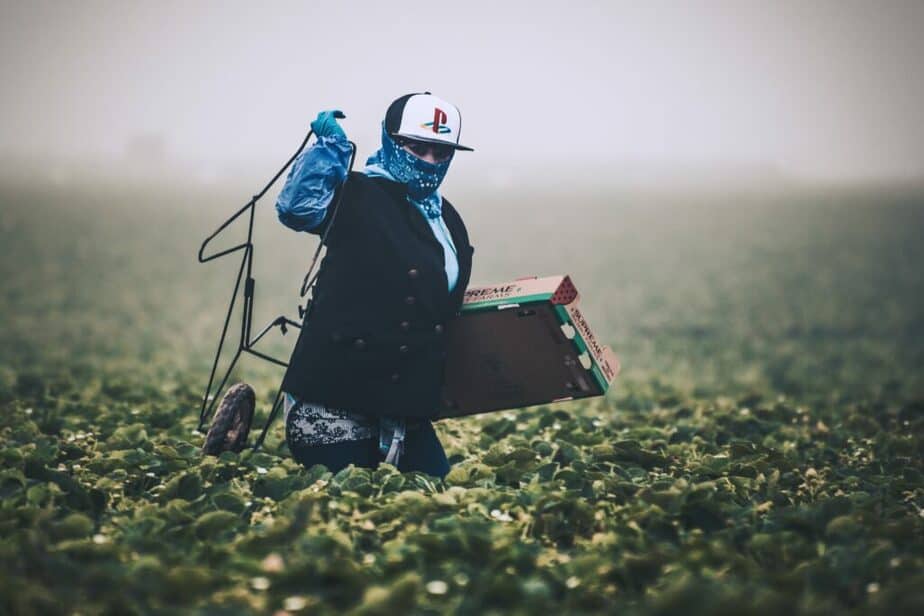
The Business of Corporate Greed
What's even more atrocious is how ridiculously profitable Big Food is, even during periods when the rest of the country is financially flailing.
In 2020 as the world reeled from the COVID-19 pandemic, Cincinnati-based Kroger Co. had 1st and 2nd quarter profits (not sales, but actual profits) that increased 90% year over year from 2019 — to nearly $2.7 billion — but removed the extra average $2/hour hazard pay just 2 months after it was implemented.
Using some back of the envelope calculations: ~420,000 employees x $2/hr x 40hrs/wk x 8wks = $268.8 million. That's about 1% of the profits they earned that were poured back into protecting the people who were making that profit possible. And that's only if every single worker was working full time, which we know they were not. Doesn't something seem awry here?
In a report published by the Brookings Institution, the authors found that the average profit of the top-13 food retailers earned an extra $16.7 billion dollars in profit for the year, while their frontline workers were only compensated an extra $1.11 per hour (or roughly 10% above their 2019 pay), on average.
To be clear, these hourly workers were being paid a wage far below what it would cost to support a family, and yet they were deemed "essential workers." As hourly associates, most didn't have access to benefits like paid sick leave or employer-subsidized health insurance.
Many were also unable to claim unemployment if they had pre-existing conditions that would leave them more vulnerable to extreme COVID-19 illness, so were forced to choose between putting themselves at risk or putting themselves in deeper poverty.
It seems to me that these front-line food workers were essential to bolstering corporate profits, but were treated as sacrificial lambs, all in the name of the bottom line. Over and over we see that our food system is controlled by corporate interests, to the detriment of workers.
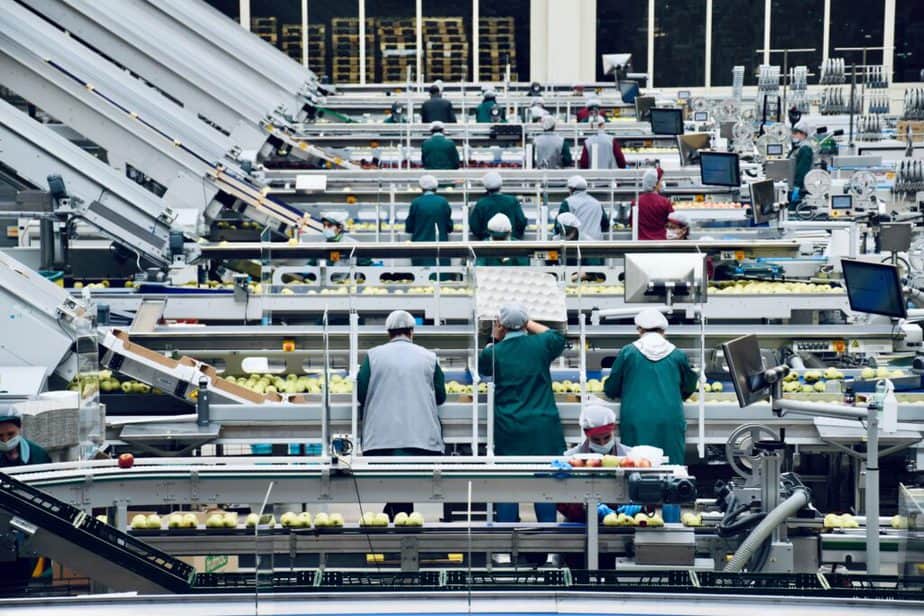
Consumers Are Getting Fleeced, Too
If you believe that you are immune to this corporate greed because you aren't part of the foodservice sector, think again.
According to Nasdaq, "In periods of rising commodity costs, food makers and distributors have been able to pass price increases onto consumers while also finding creative ways to cut costs. Then, when costs of commodities return to normal levels, these food companies are able to maintain their higher costs given consumers’ changed expectations, positioning those firms for higher profit margins and net sales."
That's right, y'all. The fact that our groceries have been subject to 8% inflation (with an estimated 4.5-5.5% more before the end of 2022) isn't going to turn around when supply chain issues are solved. This is the new normal. And Big Food & Big Ag keep getting richer for it.
In case you missed it, Big Food spent over $175 million dollars in political contributions in 2020, up from just $29 million in 1992. Clearly, The Haves of the food industry are very interested in maintaining the status quo. And the government doesn't seem to be doing anything about it. We simply have to demand change.

Organizations Working Toward Justice For Food Workers
Whether you're a food worker looking for a way to demand fair pay and labor conditions, or if you're looking to support organizations that do just that, this list of 20 organizations is a good place to start.
- Coalition of Immokalee Workers - The CIW is a worker-based human rights organization internationally recognized for its achievements in fighting human trafficking and gender-based violence at work. The CIW is also recognized for pioneering the design and development of the Worker-driven Social Responsibility paradigm, a worker-led, market-enforced approach to the protection of human rights in corporate supply chains.
- Food Chain Workers Alliance - The Food Chain Workers Alliance is a coalition of worker-based organizations whose members plant, harvest, process, pack, transport, prepare, serve, and sell food, organizing to improve wages and working conditions for all workers along the food chain.
- Fair Food International - Fair Food accelerates the change towards a sustainable food system. We want everyone to benefit from truly good food, including the people at the very start of the value chains.
- Farm Labor Organizing Committee - Farmworkers need a voice in the decisions that affect them: Allowing workers to form a union and collectively bargain with their employer is the only way to address the huge imbalance of power and provide an effective structure for self-determination.
- La Via Campesina - LVC defends peasant agriculture for food sovereignty. La Via Campesina’s definition of “Peasants” includes people who till the land to produce food, the fishers, the pastoralists, the farmworkers, the landless, the migrant workers, the indigenous people rural workers - of diverse identities, gender and age groups.
- Jobs With Justice - Jobs With Justice believes that all workers should have collective bargaining rights, employment security and a decent standard of living within an economy that works for everyone.
- United Nations International Labor Organization - The International Labor Organization (ILO) is devoted to promoting social justice and internationally recognized human and labour rights, pursuing its founding mission that labour peace is essential to prosperity.
- Migrant Justice - Our mission is to build the voice, capacity, and power of the farmworker community and engage community partners to organize for economic justice and human rights.
- Oxfam International - Oxfam is a global organization that fights inequality to end poverty and injustice. We offer lifesaving support in times of crisis and advocate for economic justice, gender equality, and climate action.
- Northwest Atlantic Marine Alliance - NAMA is a fishermen-led organization building a broad movement toward healthy fisheries and fishing communities.
- Real Food Challenge - Real Food Challenge aims to shift $1 billion (20%) of existing university food budgets away from industrial farms and unhealthy food and towards local & community-based, fair, ecologically sound, and humane food sources—what we call Real Food—by 2020.
- Restaurant Opportunities Center United - ROC United is the oldest and largest restaurant-workers led organization that works to improve restaurant workers’ lives by building worker power and uniting workers of various backgrounds around shared goals and values
- Service Employees International Union - The SEIU is a union of about 2 million diverse members in healthcare, the public sector and property services who believe in and fight for our Vision for a Just Society: where all workers are valued and all people respected—no matter where we come from or what color we are; where all families and communities can thrive; and where we leave a better and more equitable world for generations to come.
- The Solidarity Center - The Solidarity Center is the largest U.S.-based international worker rights organization partnering directly with workers and their unions, and supporting their struggle for respect, fair wages, better workplaces and a voice in the global economy.
- Unite Here - UNITE HERE is a labor union that represents 300,000 working people across Canada and the United States. Our membership is diverse. We are predominantly women and people of color, and we hail from all corners of the planet.
- United Farmworkers of America - Begun in the early 1960s by Cesar Chavez, Dolores Huerta, Larry Itliong, and other organizers, the United Farm Workers of America is the nation’s first enduring and largest farm workers’ union.
- United Food and Commercial Workers - The UFCW is a labor union made up of 1.3 million hard-working men and women in the U.S. and Canada who work in grocery and retail stores, pharmacies, health care and manufacturing facilities, and in food processing and meat packing industries.
- Teamsters - The Teamsters are America’s largest, most diverse union. They have organized workers in virtually every occupation imaginable, both professional and non-professional, private sector and public sector.
- Walk Free - Walk Free is an international human rights group focussed on the eradication of modern slavery, in all its forms, in our lifetime.
- Warehouse Workers for Justice - Warehouse Workers for Justice is a worker center fighting for good living-wage jobs in Illinois' warehouse and transportation industry.
More Reading & Listening
I've been studying the many unfair practices of our food system for years because food is (and has been) a central part of my personal and professional life for decades. If you want to learn more about the many injustices in the food sector and learn how to be a more conscientious consumer, check out some of my favorite eye-opening reads and podcasts:
Books

A Foodie's Guide to Capitalism
Buy Now →
American Agriculture: From Farm Families to Agribusiness
Buy Now →
Animal, Vegetable, Junk: A History Of Food, From Sustainable To Suicidal
Buy Now →
Animal, Vegetable, Miracle: A Year Of Food Life
Buy Now → Buy Now →
Buy Now →  Buy Now →
Buy Now → 
Fair Food: Growing a Healthy, Sustainable Food System for All
Buy Now →
Fast Food Nation: The Dark Side Of The All American Meal
Buy Now →
Food Inc.: How Industrial Food Is Making Us Sicker, Fatter, & Poorer — And What You Can Do About It
Buy Now →
Food and Society: Principles and Paradoxes
Buy Now → Buy Now →
Buy Now → 
Foodopoly: The Battle Over the Future of Food and Farming in America
Buy Now →
How the Other Half Eats: The Untold Story of Food and Inequality in America
Buy Now →
How to Be a Conscious Eater: Making Food Choices That Are Good for You, Others, and the Planet
Buy Now →
In the Struggle: Scholars and the Fight against Industrial Agribusiness in California
Buy Now →
Inflamed: Deep Medicine and the Anatomy of Injustice
Buy Now →
One Fair Wage: Ending Subminimum Pay in America
Buy Now →
Pandora's Lunchbox: How Processed Food Took Over The American Meal
Buy Now →
Planet Palm: How Palm Oil Ended Up in Everything―and Endangered the World
Buy Now →
Salt, Sugar, Fat: How The Food Giants Hooked Us
Buy Now → Buy Now →
Buy Now → 
Stuffed and Starved: The Hidden Battle for the World Food System
Buy Now →
The American Way Of Eating: Undercover At Walmart, Applebee's, Farm Fields And The Dinner Table
Buy Now → Buy Now →
Buy Now → 
The Meat Racket: The Secret Takeover of America's Food Business
Buy Now →
The Secret Life of Groceries: The Dark Miracle of the American Supermarket
Buy Now →
The Spirit of Soul Food: Race, Faith, and Food Justice
Buy Now →
The Third Plate: Field Notes on the Future of Food
Buy Now → Buy Now →
Buy Now → Podcasts
Other Resources:
If you're still hungry for change, I'm right there with you. Our food system needs a massive overhaul! Here are some other resources that you might find interesting:
- The Food Justice Library
- Food Insecurity - Organizations Working Toward Change - A brief overview about the problem of food insecurity and a list of organizations that can help.
- Civil Eats - Civil Eats is a daily news source for critical thought about the American food system. We publish stories that shift the conversation around sustainable agriculture in an effort to build economically and socially just communities.
- FoodTank - Food Tank is "the think tank for food," dedicated to building a global community for safe, healthy, nourished eaters through policy, education and community organization.
- FoodCorps - Together with communities, FoodCorps serves to connect kids to healthy food in school. Help us create a future in which every school is a healthy one and every kid has a shot at success.
Did I miss anything? Do you have more questions? Let me know in the comments below!

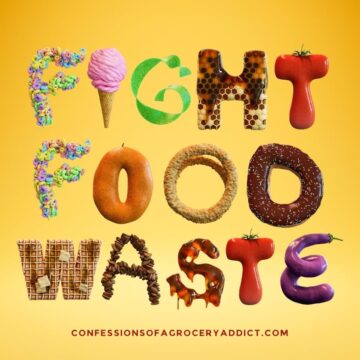
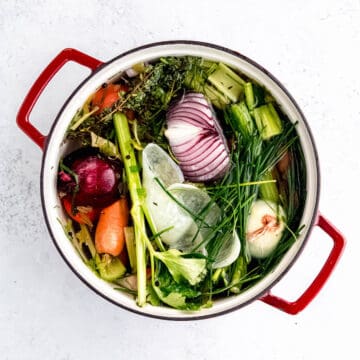
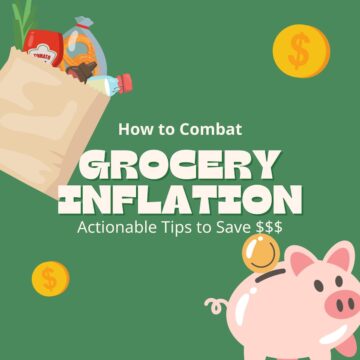
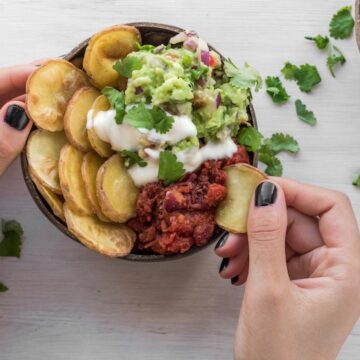
Comments
No Comments